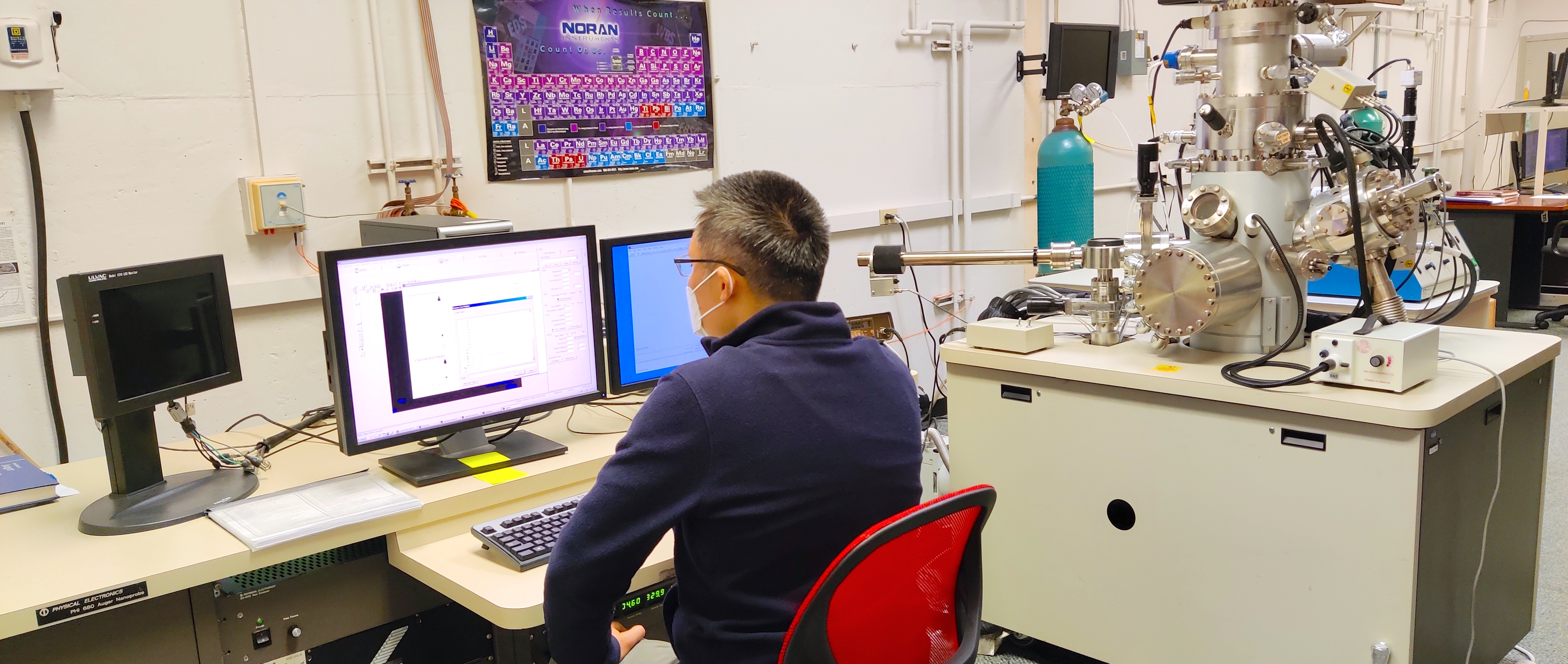
The Swagelok Center for Surface Analysis of Materials at Case Western Reserve University has two surface analysis instruments for X-ray photoelectron spectroscopy (XPS) (also known as electron spectroscopy for chemical analysis (ESCA)) and time-of-flight secondary ion mass spectrometry (TOF-SIMS). There are trade-offs and limitations to all equipment. The table below provides a high-level comparison of which surface analysis technique might be useful for your scientific problem. In addition to the two surface analysis instruments, SCSAM also has a portable X-ray fluorescence spectrometer (pXRF) for non-destructive, quantitative chemical analysis of bulk solid and liquids at ambient pressure with no sample preparation requirements.
- PHI VersaProbe 5000 X-ray Photoelectron Spectroscopy (XPS)
- PHI TRIFT V nanoTOF Time of Flight Secondary Ion Mass Spectrometer (TOF-SIMS)
- Bruker Tracer 5g Portable X-ray Fluorescence Spectrometer (pXRF)
|
(TOF-SIMS) |
(XPS) |
|
|---|---|---|
|
Incident Source |
Ions: Ga+, C60+ |
AlKa X-ray (1486.6 eV) |
|
Signals Detected |
Molecular ions Atomic ions Isotope ions Secondary electrons |
Photoelectrons Auger electrons Secondary electrons |
|
Elements Detected |
Full periodic table |
Boron to Uranium |
|
Detection Limit |
ppm to ppb range |
0.1 atomic % |
|
Probe Depth |
2-3nm |
5-10nm |
|
Lateral Resolution |
200nm - a few μm |
10 μm |
|
Quantitative Analysis |
No |
Yes |
|
Sample Requirement |
UHV compatible conductors to insulators Maximum Dimensions 70 mm x 70 mm x 4 mm OR 15 mm x 15 mm x 4 mm |
UHV compatible conductors to insulators Maximum Dimensions 40 mm x 40 mm x 5 mm OR 10 mm x 10 mm x 7 mm |
|
Main Uses |
Excellent detection limit of elements & isotopes; Detection of atomic & molecular species (inorganic & organic); Imaging, Depth profiling |
Elemental composition; Chemical state analysis; Depth profiling |
